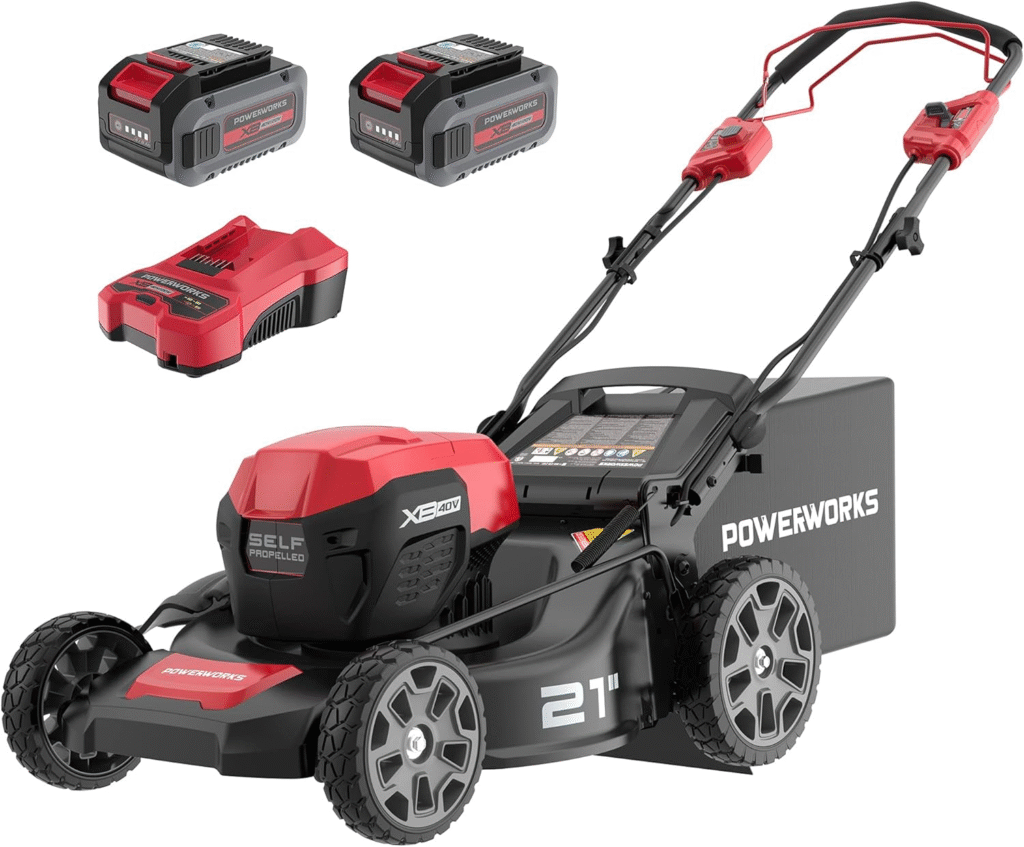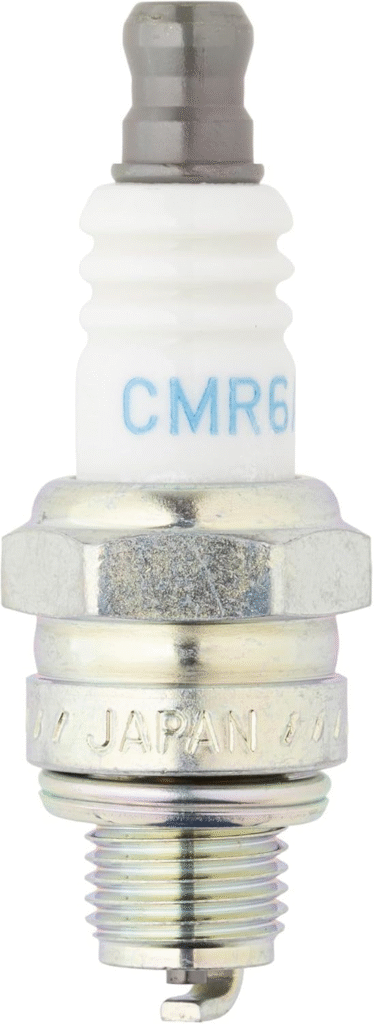How to Repair a Self Propelled Lawn Mower
Do you have a self-propelled lawn mower? Do you know how to repair a self propelled lawn mower when it stops working? If not, you are in the right place.
Repairing a self-propelled lawn mower might sound complicated, but it can be quite simple with the right steps! These mowers are incredibly useful because they help you cut grass without much effort.
However, when they malfunction, it can be frustrating. In this guide, we’ll explore how to repair a self-propelled lawn mower, covering common issues and easy solutions.
Whether your mower won’t start, stops unexpectedly, or has problems moving forward, we’ll provide you with the right guide to get it running smoothly again.

Table of Contents
Understanding Your Lawn Mower
A self-propelled mower has a motor that helps push it forward, so you don’t have to exert much effort yourself. Most of these mowers have two levers: one controls the engine’s power, and the other controls the speed.
If something goes wrong, you might find that it doesn’t start, it stops while cutting, or it doesn’t move forward as expected.
Read more >>> How to Repair the Pull Cord on a Lawn Mower
Common Problems
Here are some common issues you might face with your self-propelled lawn mower:
- It won’t start: This is a frequent problem that can arise due to several reasons, including a dead battery, old fuel, or a dirty spark plug.
- It Stops While Cutting: If your mower cuts out while you’re using it, the fuel might be low, or the air filter could be clogged.
- It Doesn’t Move Forward: If the self-propelling feature isn’t working, the drive belt might be loose or broken.
Read more on >>> The Cordless Soap Scrubber That’s Changing Everything.
How to Repair a Self Propelled Lawn Mower
1. Gather Your Tools
Here are the necessary tools that you need to have on hand:
- Screwdriver
- Wrench set
- Spark plug wrench
- Cleaning supplies (like a brush and some rags)
2. Check the Spark Plug
The spark plug is responsible for starting your mower. Here’s how to check it:
- Locate the Spark Plug: It’s usually near the engine.
- Remove the Spark Plug: Use the spark plug wrench to unscrew it.
- Inspect It: If it’s dirty or worn out, you should either clean it or replace it. A reliable replacement option is the NGK – 130-797 Spark Plug, which you can find on Amazon.

Cleaning the spark plug is simple. You can use a wire brush to remove any carbon buildup. If it looks too damaged, replacing it is the best choice.
3. Change the Oil
Dirty oil can cause significant problems, so changing it regularly is essential. Here’s how to do it:
- Find the Oil Drain: Look for a plug at the bottom of the mower.
- Drain Old Oil: Use a pan to catch the oil as you unscrew the plug.
- Add New Oil: Check the owner’s manual for the right type of oil. A good choice is SAE 30 oil, which you can purchase on Amazon.
Make sure to check the oil level with the dipstick after adding new oil. Too much or too little oil can cause issues.

Also, read >>> Best Laser Rust Removal Machine Review
4. Clean or Replace the Air Filter
A clean air filter is vital for your engine’s performance. Here’s how to check it:
- Locate the Air Filter: This is usually on the side of the engine.
- Remove and Inspect: If it’s dirty, clean it with soap and water, or replace it. The Air Filter 12 083 10-S is a good option available on Amazon.
A clean air filter allows the engine to breathe properly, improving performance and efficiency.
5. Check the Fuel System
Old fuel can be a significant cause of starting issues. Here’s what to do:
- Drain Old Fuel: If your mower has been sitting for a while, drain it into a container.
- Add Fresh Fuel: Use gasoline with a high octane rating, ideally mixed with a fuel stabilizer to keep it fresh longer.
Make sure to use the right fuel type; using the wrong fuel can lead to engine problems. Read the manual well before you use.
6. Inspect the Drive Belt
If your mower isn’t moving forward, the drive belt might be the culprit. Here’s how to check it:
- Locate the Belt: Check the underside of the mower.
- Check for Damage: If it’s cracked or loose, you’ll need to replace it. The Oregon 75-685 Drive Belt is the best choice.
If the belt is in good condition but loose, adjust it according to the manufacturer’s instructions.
7. Test Your Mower
After making these repairs, it’s time to test your mower. Start it up and see if it runs smoothly.
Read more >>> The Ultimate Guide to Hand Weeding Hoeing Tools
Maintenance Tips
To keep your mower running well, follow these maintenance tips:
- Regularly Change the Oil: Aim for every 50 hours of use or once a season.
- Clean the Mower Deck: Grass clippings can build up and affect performance. Clean it after each use.
- Store Properly: Keep your mower in a dry place to prevent rust.

Additional Tips for Longevity
Beyond the basics, here are some extra tips to ensure your mower lasts as long as possible:
- Sharpen the Blades: Dull blades can tear grass rather than cut it cleanly. Sharpen them at least once a season.
- Check Tire Pressure: If your mower has wheels, make sure the tires are properly inflated. Low tire pressure can affect performance.
- Inspect Cables and Levers: Regularly check the cables and levers for wear and tear. Replace them if they’re frayed or broken.
Troubleshooting Common Issues
Even after repairs, you might encounter some issues. Here are solutions for common problems:
Mower Won’t Start
If your mower won’t start despite checking the spark plug and fuel, consider these steps:
- Battery Issues: If your mower uses a battery, ensure it’s fully charged. You can use a multimeter to check the voltage.
- Faulty Ignition Switch: If the ignition switch is defective, it may need to be replaced.
Engine Cuts Out During Use
If your mower starts but cuts out while you’re using it, try the following:
- Fuel Flow: Check for any blockages in the fuel line. Clear any debris or dirt.
- Overheating: If the engine gets too hot, it may shut down. Ensure that the cooling fins are clean.
Self-Propel Feature Isn’t Working
If the self-propel feature isn’t working properly, check:
- Drive Clutch: Ensure the drive clutch is engaging correctly. If it feels loose, it may need adjustment.
- Belt Tension: A loose drive belt can prevent proper engagement. Adjust it according to the manufacturer’s guidelines.
Read more >>> Ultimate Guide to Pole Saws: Everything You Need to Know
Conclusion
As you can see, how to repair a self propelled lawn mower is easier than it seems. With a few tools and some basic knowledge, you can tackle common issues like starting problems, oil changes, and more.
Keeping your mower in good shape means a healthier lawn and a smoother mowing experience. Happy mowing!




